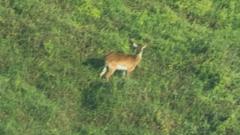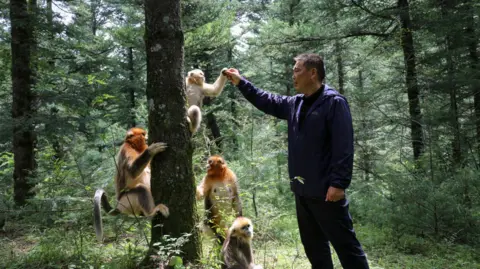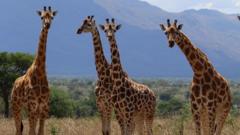In a remarkable discovery, wildlife researchers have taken the first-ever photographs of the critically endangered Upemba Lechwe antelope, a species native to the Kamalondo Depression in southern Democratic Republic of Congo (DRC). During an aerial survey, researchers located only 10 individuals, revealing that the overall population is less than 100, raising alarm bells for conservationists.
Manuel Weber, who spearheaded the survey, emphasized the precarious situation of the Upemba Lechwe, describing the species as "on the very brink" of extinction. With its distinctive features, such as a lack of dark stripes on its legs and absence of dark shoulder patches, the Upemba Lechwe stands out among other antelope species in the region.
Weber shared insights on the biodiversity of the area, calling it a "magical place," but raised concerns regarding the challenges of conservation in the region. Factors such as a growing human population, along with fishing and hunting activities, threaten the delicate ecosystem where these antelopes reside. He warned that without immediate intervention, the Upemba Lechwe could completely disappear.
The findings were published in the African Journal of Ecology, marking the first extensive survey of this antelope species in over five decades. This discovery reflects the ongoing efforts in conservation as DRC has a history of notable wildlife imagery, including viral photos capturing gorillas in Virunga National Park.
As the world watches, the need for urgent protection measures to save the Upemba Lechwe has never been more pressing, making this a pivotal moment for the future of this rare antelope species.



















